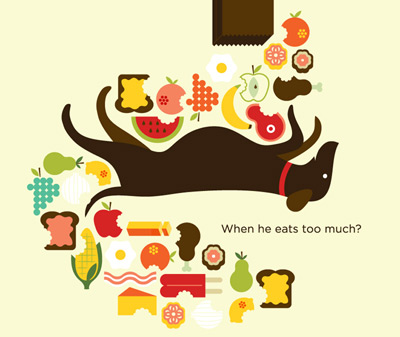science

In particle physics, an elementary particle or fundamental particle is a particle not known to have substructure; that is, it is not known to be made up of smaller particles. If an elementary particle truly has no substructure, then it is one of the basic building blocks of the universe from which all other particles are made.
In the Standard Model, the elementary particles consist of the fundamental fermions and the fundamental bosons:
Fermions:
• Quarks (up, down, charm, strange, top, bottom)
• Leptons (electron, electron neutrino, muon, muon neutrino, tau, tau neutrino)
Bosons:
• Gauge bosons (gluon, W and Z bosons, photon)
• Higgs boson
Of these, only the Higgs boson remains undiscovered, but efforts are being taken at the Large Hadron Collider to determine whether it exists or not.
Additional elementary particles may exist, such as the graviton, which would mediate gravitation. Such particles lie beyond the Standard Model.
{ Wikipedia | Continue reading }
ideas, science | November 8th, 2011 1:50 pm

Bluma Zeigarnik was a Russian psychologist who first identified the tendency to remember uncompleted or interrupted tasks better than completed or uninterrupted ones in the late 1920′s.
{ BPS | Continue reading }
video still { Pipilotti Rist, I’m Not The Girl Who Misses Much, 1986 }
psychology | November 6th, 2011 9:02 am

Two scientists who study icky sounds have figured out why fingernails dragged across a chalkboard make people’s skin crawl. It’s not the highest or lowest sounds in the squeak that are so annoying, but rather tones that lie in the range of a piano keyboard.
{ ScienceNews | Continue reading }
photo { Jordan Kinsler }
noise and signals, science | November 4th, 2011 11:40 am

By comparing the brains of monkeys living in large groups to those living in smaller groups, scientists have found that the brain can change shape to accommodate social network size.
The finding, published in Science today, reveals that there are still opportunities for the brain to change, even during adulthood. It also suggests that a complex social environment puts pressure on improving brain plasticity - our brain’s ability to efficiently adapt to changes.
The researchers found that areas of the brain known to process social information such as facial expressions were larger in monkeys who lived in larger groups, and vice versa. There was also more activity between neurons in the monkeys who had larger social networks.
{ Cosmos | Continue reading | Scientific American }
animals, brain, social networks | November 4th, 2011 11:23 am

It’s weird to think that tens of thousands of years ago, humans were mating with different species—but they were. That’s what DNA analyses tell us. When the Neanderthal genome was sequenced in 2010, it showed that as much as 1 to 4 percent of the DNA of non-Africans might have been inherited from Neanderthals.
Scientists also announced last year that our ancestors had mated with another extinct species, and this week, more evidence is showing how widespread that interbreeding was.
We know little about this extinct species. In fact, we don’t even have a scientific name for it; for now, the group is simply known as the Denisovans.
{ Smithsonian Magazine | Continue reading }
flashback, genes, mystery and paranormal, science | November 4th, 2011 11:10 am

A new study shows that the simple act of walking through a doorway creates a new memory episode. (…) Memory performance was poorer after traveling through an open doorway, compared with covering the same distance within the same room.
{ BPS | Continue reading }
psychology | November 3rd, 2011 5:04 pm

Your therapist is probably giving you multiple personality disorder.
Oh sure, he’s going to deny it. He will say you obviously had some problems to begin with, and that he just uncovered the form they’re taking and their source. And there you will be, disassociated into several different personalities. People you don’t know will greet you with names you don’t recognize. You’ll find notes around your apartment written in unfamiliar handwriting. You’ll walk into hotel rooms without pants (every person who has ever had multiple personality disorder has always had one who was a slut).
And maybe by the end of it you will remember seeing your father drink the blood of a newborn baby. So strange that you had forgotten something like that for the last twenty years, you think it would be a pretty memorable event. Or being raped by your brother. Never mind the fact that you never had a brother, you are sure it happened. And your therapist will say, Aha! That is why you are such a mess, can’t keep a boyfriend or a job for more than six weeks, that is why you dread going home for Christmas. It’s because you remember your parents donning black robes and smearing the blood of a virgin all over your face before they let their friends have their way with you on a Satanic altar. That must be it.
Oh, and that will be $250, sweetie. You can leave the check with the receptionist.
Back in the 1980s, multiple personality disorder was a thing. The thing. You don’t hear so much about it today; it’s like we all woke up one day and thought, right, probably not possible after all, let’s move on. But when MPD was hot, it wasn’t just something to be burdened with, a problem to be overcome: It was something to be proud of. (…)
At the base of this disorder was abuse. Abuse so intense and dramatic that it was wiped from victims’ memory but still shattered their psyches. (…) And so here we have a collection of strange girls who had been through some shit.
{ The Smart Set | Continue reading }
photo { Miss Aniela }
psychology, uh oh | November 3rd, 2011 4:04 pm

By consuming fewer calories, aging can be slowed down and the development of age-related diseases such as cancer and type 2 diabetes can be delayed. The earlier calorie intake is reduced, the greater the effect.
Researchers at the University of Gothenburg have now identified one of the enzymes that hold the key to the aging process.
{ EurekAlert | Continue reading }
related { She was found dead that afternoon; poisoned by water. From salami to soda pop: what does “toxic” really mean?
Botany, food, drinks, restaurants, health | October 31st, 2011 2:00 pm

Emotional tears may be uniquely human and are an effective signal of distress in adults. The present study explored whether tears signal distress in younger criers and whether the effect of tears on observers is similar in magnitude across the life span. Participants rated photographs of crying infants, young children, and adults, with tears digitally removed or added. The effectiveness of tears in conveying sadness and eliciting sympathy was greatest for images of adults, intermediate for images of children, and least potent for images of infants. These findings suggest that the signal value of tears varies with the age of the crier. The results may shed light on the functional significance of crying at different stages of human development.
{ Evolutionary Psychology | Continue reading | PDF }
psychology, water | October 31st, 2011 12:22 pm

The zygomatic major, which resides in the cheek, tugs the lips upward, and the orbicularis oculi, which encircles the eye socket, squeezes the outside corners into the shape of a crow’s foot. The entire event is short — typically lasting from two-thirds of a second to four seconds — and those who witness it often respond by mirroring the action, and smiling back.
Other muscles can simulate a smile, but only the peculiar tango of the zygomatic major and the orbicularis oculi produces a genuine expression of positive emotion. Psychologists call this the “Duchenne smile,” and most consider it the sole indicator of true enjoyment. The name is a nod to French anatomist Guillaume Duchenne, who studied emotional expression by stimulating various facial muscles with electrical currents. (…)
Psychological scientists no longer study beheaded rogues — just graduate students, mainly — but they have advanced our understanding of smiles since Duchenne’s discoveries. We now know that genuine smiles may indeed reflect a “sweet soul.” The intensity of a true grin can predict marital happiness, personal well-being, and even longevity. We know that some smiles — Duchenne’s false friends — do not reflect enjoyment at all, but rather a wide range of emotions, including embarrassment, deceit, and grief. We know that variables (age, gender, culture, and social setting, among them) influence the frequency and character of a grin, and what purpose smiles play in the broader scheme of existence. In short, scientists have learned that one of humanity’s simplest expressions is beautifully complex.
{ APS/Observer | Continue reading }
photo { Richard Avedon, William Simon, US Secretary of Treasury, 1976 }
psychology, science | October 28th, 2011 1:33 pm

Most people believe the premature orgasm to be a typical male problem. Women on the other hand are often expected to have difficulties reaching their peak. However, a new study shows that women too can come too fast, sometimes even as often as men. The study was conducted by researcher Serafim Carvalho and his colleagues at the Hospital Magalhães Lemos in Portugal.
Carvalho and his team found 510 Portuguese women between the ages of 18 and 45 years willing to participate. As it turned out, 40 percent sometimes came too fast, 14 percent experienced it on a regular basis and 3.3 percent noted to experience ‘dysfunctions’ as a result of premature orgasms.
{ United Academics | Continue reading }
relationships, science, sex-oriented | October 28th, 2011 12:12 pm

How listening to an iPod shrinks your sense of personal space
Positive music played over headphones (but not speakers) had the effect of shrinking the participants’ sense of personal space, so that the approaching experimenter could walk closer to them before they (the participant) felt uncomfortable. On the other hand, negative music played over speakers (but not headphones) expanded the participants’ personal space, so they felt uncomfortable when the approaching experimenter was further away. These effects were most pronounced in the participants who afterwards reported that they’d been affected emotionally by the music to a greater degree.
{ BPS | Continue reading }
music, psychology, relationships | October 28th, 2011 12:11 pm
Linguistics, science | October 28th, 2011 11:10 am

A University of Maastricht study found that eating at least four small meals daily reduces obesity risk by 45 percent. This Dutch study also found that people who skip breakfast are five times as likely to become obese as regular breakfasters.
Yet a University of Ottawa study found that eating many small meals doesn’t promote weight loss. So did a French National Center for Scientific Research study, which trashed grazing: “Epidemiological studies which have suggested that nibbling is associated with leanness are extremely vulnerable to methodological errors,” its authors warn.
A UC Berkeley study found that “alternate-day fasting” — feasting one day, fasting the next, ad infinitum — might decrease the risk of heart disease and cancer.
Researching the effects of meal frequency is notoriously tricky, because it involves so many variables: nutritional content, time of day, exercise, genetics. So the scientific jury is still out.
“There is no biological reason for eating three meals a day,” says Yale University history professor Paul Freedman.
{ AlterNet | Continue reading }
photo { Rasmus Mogensen }
food, drinks, restaurants, health, science | October 27th, 2011 11:32 am

Although procrastination is conceived as a problem by the scientific community, there is not much consensus regarding the nature of this issue. Scholars have been arguing for decades whether procrastination is a rather uncontrollable phenomenon that happens merely on a whim or if it can be classified as arousal, avoidant, or decisional, for example. In any event, statistics since the early 1970′s have consistently shown an alarming prevalence of procrastination reaching over 70% among college students and starting at 20% in the general population. (…)
The Rational Emotive Behavior Therapy (REBT) website offers a worthwhile guide to identifying and dealing with procrastination.
{ BrainBlogger | Continue reading }
guide, psychology | October 27th, 2011 8:25 am

Whether you were happy with life as a teenager could be down to a certain gene, says a new study.
In a large study of American adolescents, teens who carried the long form of the 5HTTLPR locus were more likely to say they were satisfied or very satisified with their lives (at age 18 to 26). People with two long variants were the most cheerful, with short/long carriers in the middle and short/short being the least so. (…)
This study is the latest in a long, long line of attempts to correlate 5HTTLPR with happiness, depression, stress and so on. A few months ago I discussed the history of this busy little gene and covered a meta-analysis of no fewer than 54 papers which claimed that there was indeed a link, with the short allele increasing the risk of depression in response to stressful events.
However many studies failed to find one, and worryingly the three largest studies were all negative which is a classic tell-tale sign of publication bias.
{ Neuroskeptic | Continue reading }
photos { 1. Erica Segovia | 2. Maggie Lochtenberg }
genes, kids, photogs | October 27th, 2011 8:19 am

According to my teacher, drivers with red cars had to pay higher insurance rates. Apparently this was due to the fact that people in red cars were more likely to speed. I’ve since learned that the relationship between red and speeding is actually a pervasive urban legend. Nevertheless, it piqued my interest in the association between color and behavior. Though red might not be associated with speeding, it has been found to relate to a variety of psychological processes and outcomes in both humans and non-human primates including dominance, competitive sports outcomes, achievement, and sexual attraction.
There is a large body of animal research showing that red coloration is related to testosterone levels and by extension to dominance and aggressive behavior. (…) One experimenter wore a red shirt, and the other wore either a green or blue shirt. Across conditions the monkeys disproportionately stole from the experimenter NOT wearing red – even if the “red” experimenter was female.
{ Psych Your Mind | Continue reading }
animals, colors, psychology | October 27th, 2011 8:06 am

Octopuses are classified within the invertebrates in the mollusk family, and many mollusks, like clams, have no brain.
Only recently have scientists accorded chimpanzees, so closely related to humans we can share blood transfusions, the dignity of having a mind. But now, increasingly, researchers who study octopuses are convinced that these boneless, alien animals—creatures whose ancestors diverged from the lineage that would lead to ours roughly 500 to 700 million years ago—have developed intelligence, emotions, and individual personalities. Their findings are challenging our understanding of consciousness itself. (…)
Another measure of intelligence: you can count neurons. The common octopus has about 130 million of them in its brain. A human has 100 billion. But this is where things get weird. Three-fifths of an octopus’s neurons are not in the brain; they’re in its arms.
“It is as if each arm has a mind of its own,” says Peter Godfrey-Smith, a diver, professor of philosophy at the Graduate Center of the City University of New York, and an admirer of octopuses. For example, researchers who cut off an octopus’s arm (which the octopus can regrow) discovered that not only does the arm crawl away on its own, but if the arm meets a food item, it seizes it—and tries to pass it to where the mouth would be if the arm were still connected to its body.
{ Orion | Continue reading }
artwork { Hokusai, The Dream of the Fisherman’s Wife, 1814 }
animals, brain, science | October 26th, 2011 1:35 pm

When asked to plan ahead and describe the most efficient route between two locations, we apparently visualise connections between highly salient streets, which leads us to formulate a relatively longer route, with fewer turns. This is known as graph-based way-finding.
But asked to actually walk between the same two points, we base our route more on direction, make more turns, take smaller streets, and navigate more efficiently, as ongoing feedback from the unfolding scene reminds us of short-cuts. This incremental approach is known as direction-based wayfinding.
The third mental strategy is brought to bear when we give directions to a stranger, with reference made to the simplest possible route, with the fewest turns and passing the most salient landmarks.
{ BPS | Continue reading }
psychology | October 26th, 2011 1:12 pm

Sexual infidelity can be costly to members of both the extra-pair and the paired couple. Thus, detecting infidelity risk is potentially adaptive if it aids in avoiding cuckoldry or loss of parental and relationship investment.
Among men, testosterone is inversely related to voice pitch, relationship and offspring investment, and is positively related to the pursuit of short-term relationships, including extra-pair sex.
Among women, estrogen is positively related to voice pitch, attractiveness, and the likelihood of extra-pair involvement.
Although prior work has demonstrated a positive relationship between men‟s testosterone levels and infidelity, this study is the first to investigate attributions of infidelity as a function of sexual dimorphism in male and female voices.
We found that men attributed high infidelity risk to feminized women‟s voices, but not significantly more often than did women. Women attributed high infidelity risk to masculinized men‟s voices at significantly higher rates than did men. These data suggest that voice pitch is used as an indicator of sexual strategy in addition to underlying mate value.
{ Evolutionary Psychology | Continue reading | PDF }
artwork { Raphaelle Peale, Venus Rising from the Sea—A Deception, 1822 }
olfaction, relationships | October 25th, 2011 2:39 pm






















